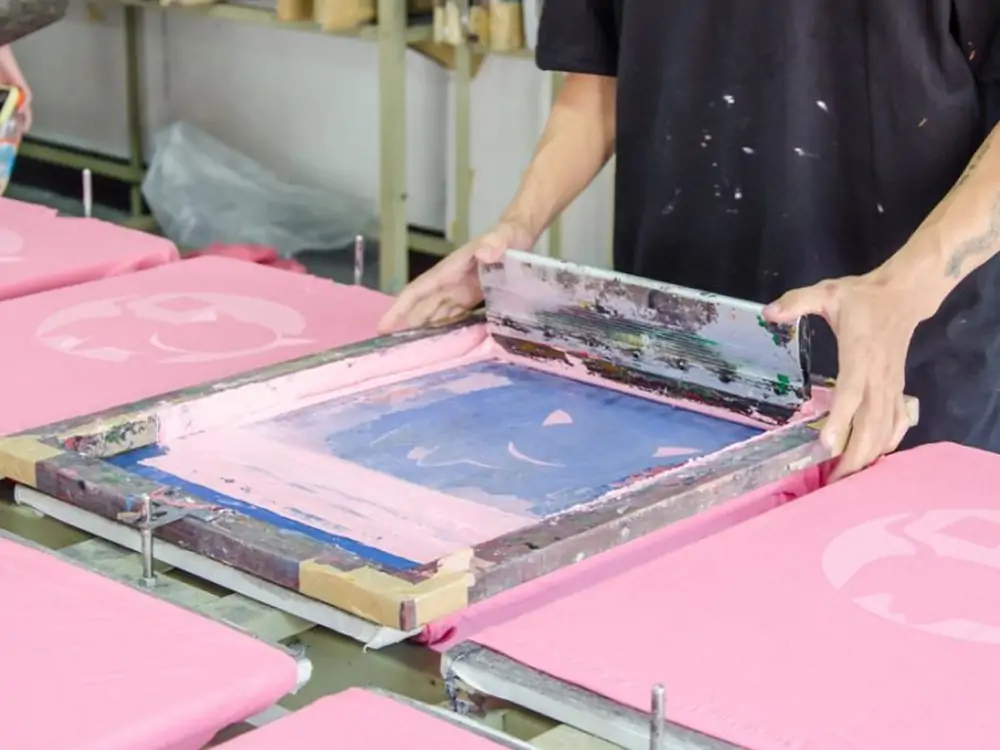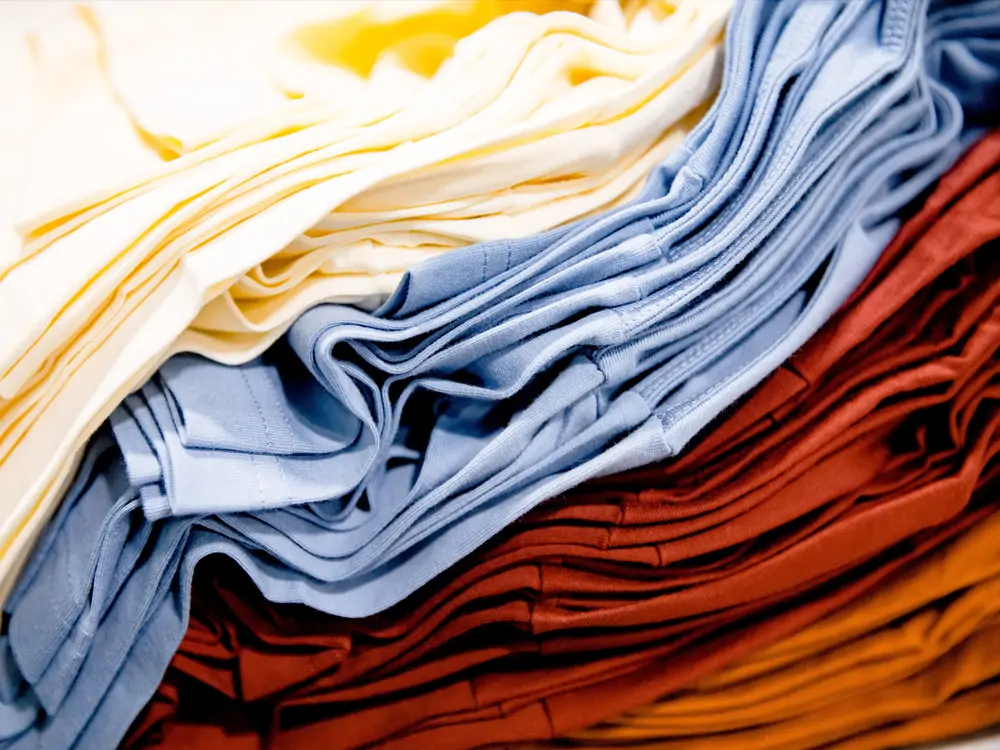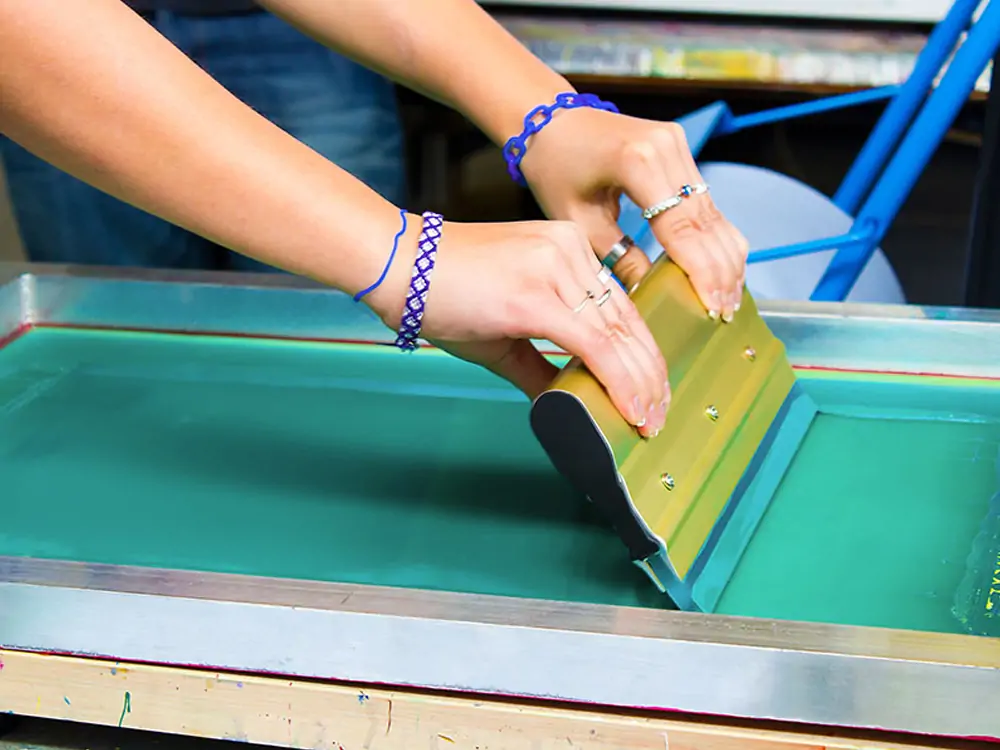If you are into screen printing, sooner or later, you will come across this question. Does dying a shirt affect screen printing? The short answer is yes, it does, but there are ways to reduce the impact or even prevent it.
This post will delve deep into the effects of dying on screen printing. Here, we will also provide tips to help you approach screen printing and dying safely and efficiently.

Factors That Determine the Effects of Screen Printing on Dying
In the fashion industry, screen printing and dying are well-known customization techniques. The relationship between these two methods depends on several factors, such as the type of fabric, dyes, and the way dying and screen printing are done. Let’s dive a little bit deeper into them.
Type of Fabric
The effects of dying on screen printing largely depend on the fabric composition. Due to their properties, polyester, cotton, and silk react differently to inks and dyes. Synthetic fibers need different dyeing techniques than natural fibers.
The durability of both the screen-printed design and the dyed color depends on the type of fabric used. To get the desired results, choose fabrics that work well with dying and screen printing.
The presence of flame retardants or water repellents can affect screen printing. Consider removing any finishes by washing and treating the fabric. The dyes and inks will adhere better to the fabric.
Types of Dyes
The quality of screen printing largely depends on the type of inks and dyes used in the process. Dyes can be animal-based, plant-based, or synthetic. Synthetic dyes come with significantly more color options.
In the same way, inks used for screen printing can be oil, water or plastisol-based. While plastisol-based and oil-based inks are more durable, water-based inks are more eco-friendly.
During the dying process, the dyes must be compatible with the fabric. Before you do it, consider testing the dye on a small sample fabric.
Techniques of Dyeing and Screen Printing
The impact also depends on the techniques of dyeing and screen printing. Whether it is machine dyeing, hand-dyeing or immersion dyeing, the dying method determines the outcome.
The outcome can also depend on the screen printing technique. To get the best results, make sure you have a thorough understanding of both processes.

Dying before Screen Printing
You may choose to dye a piece of fabric before you do screen printing. When you dye a shirt, the dye is absorbed by the fabric, which changes its color. These changes can determine the interactions between the dye and the fabric.
Projects like these require some knowledge about color migration. If you want to do dyeing before screen printing, choose the dye carefully. For example, if you want the screen printing to be a light color, you should prefer a light color to a dark one for dye.
Certain types of dyes, such as acidic dyes, can make the fabric stiff. That can also make screen printing a bit difficult.
Dying after Screen Printing
Can you dye a screenprinted shirt? Yes, you can. However, for dyeing shirts after screen printing, the final outcome may not be as expected. This is because screen printing typically involves water-based inks. Therefore, immersion of the fabric in water can affect the screen printing.
So, if you want to dye a shirt after screen printing, be sure to choose a dye that is not affected by water-based inks. Failure to do so can lead to a less vibrant design.
Tips for Preserving Screen Printing During Dying
Screen printing on shirts is a pretty straightforward process. But make sure you know the mechanics of dyeing and screen printing. It will help you get the best out of the processes. Here are some tips that can help you incorporate both techniques:
- Conduct a test: Before you dye or screen print, conduct a small test of the materials and techniques. Can you tie dye color shirts? Can you dye a shirt with vinyl on it? You can know for sure only once you have conducted a test. It will give you an insight into the interactions between the dye and the ink. And you will know whether you need to make adjustments.
- Consider using a complimentary color: Choose the color carefully when you dye a shirt before screen printing. Try to learn about the interactions of this color with the ink. For example, choose a dark blue ink if you want your shirt to be a light blue color.
- Choose the fabric carefully: Not all fabrics interact with dyes. For example, cotton does not absorb dyes very well, although it is widely used for screen printing. Also, avoid stacking freshly cured shirts.
- Choose a water-based dye: The compatibility of the dye with water-based ink is important. This way, you can prevent the design from fading or bleeding.

Frequently Asked Questions
How much impact does dyeing have on screen printing?
Dying can affect screen printing in several ways. The design created by screen printing can change its appearance due to the dye color. If the dye color and the ink color are the same, the design may not be clearly visible. In some cases, the dye can alter the texture of the fabric.
Should I screen print before or after dyeing a shirt?
In general, dyeing takes place before screen printing. This is because dying consolidates the color and texture of the fabric. Because it defines dye, it improves the visibility of the design. Another advantage of this approach is that it reduces the risk of interactions with the ink.
Do some dyes work better with screen printing?
Yes, not all dyes are compatible with screen printing. So, choose a dye that is designed for the fabric you are using. For example, for a cotton shirt, choose a dye that is compatible with cotton fabrics. If you choose the right dye, there will be almost no dye migration. So, the process will have little to no impact on screen printing.
How long does screen printing last?
If high-quality materials are used, screen printing lasts for several years. The screen printing will not fade even after dozens of washes. This durability depends on the print thickness. The thicker the print the longer it is likely to last. This factor is important for T-shirts and other items that are meant for frequent use.
Conclusion
You may choose to dye a shirt before or after screen printing. Make sure you actually know what you are doing. Do not ruin the screen printed design. Prioritize testing, particularly when working with poly-blend or polyester garments.
While screen printing is a competitive niche, the community can provide you with valuable information. If you have specific questions, do not hesitate to join social media groups and forums.
If you have a cheaper shirt, dye migration is more likely to occur. Therefore, if you must buy poly-blend or polyester shirts, be sure to choose high-quality ones.
The bottom line is, dyeing a shirt affects screen printing. However, you can prevent this impact. Consider factors such as fabric composition and color absorption. Regardless of your approach, be sure to test the materials before you dive into action.
